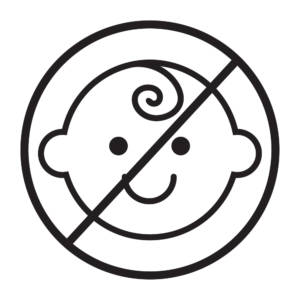No Kidding: Childfree Couples on the Rise in Canada

Childfree Canadian households are on the rise, and some enlightening facts tell a rather complex story of economic insecurity and gender disparities.
According to Statistics Canada, couples without children comprise almost 26% of Canadian households. That statistic may not seem surprising unless you also consider that the number of childfree Canadian couples is growing. With the typical order of love, marriage, and children so ingrained into our societies, how and why are these Canadians bucking the trend? Some enlightening facts tell a rather complex story.
Fewer Children and Dropping Birthrates
CBC News revealed Statistics Canada’s findings from its most recent National Household Survey in an August 2017 article. In some provinces, childfree couples make up over 50% of the population. A Global News piece from May 2017 also mentions that the Canadian birthrate has dropped to an average of 1.6 children per woman. Earlier figures from Statistics Canada (StatCan) show that the total population of those aged 24 and younger has slowly declined from 48.1% in 1971 to 29.9% in 2010.
Money Matters and Raising Kids
What could account for decreases in both the total number of children and the current birthrate? Some childfree households are made up of aging empty nesters. Even so, many younger couples are simply choosing not to have kids at all. Economic concerns are one major reason, as journalist Andrew Russell explains in his May 2017 Global News article. StatCan disclosed that 34.7% of Canadian adults under 35 still live with their parents. Susan McDaniel, a global population researcher at the University of Lethbridge, stresses three key factors influencing younger couples to delay or forgo having kids:
- Rising expenses
- Lower wages
- Lack of job security
Not only that, the costs of raising kids have also skyrocketed. Global News reported in January 2017 some alarming estimates from MoneySense, which placed a $243,656 price tag on caring for one child from birth to age 18. What’s even more disturbing are the Canadian Centre for Policy Alternatives’ findings that childcare expenses have risen two to three times more than inflation.
Concerns About Gender Inequality
Men in heterosexual relationships are taking on more housework and childrearing responsibilities. However, there’s still a lingering gender imbalance when it comes to kids, careers, and earnings. New York Times writer Claire Cain Miller mentions that in a 2018 survey of people under 45, many respondents commented that they worried about having sufficient time and money to raise children. She also suggests a deeper story behind those answers. Women now view childbearing as a choice rather than an obligation.
Cain Miller comments in another NYT piece that the gender pay gap widens the most when women are in their late 20s and early 30s, coinciding with the births of their children. Some may put their careers on hold, while others find themselves working the familiar “second shift,” taking on a greater share of housework and childcare responsibilities. With these realities, women can fall behind their male counterparts in both career advancement and earning power. Suggested solutions include greater workplace flexibility and public policy providing affordable childcare and ample leave to parents of all genders.
Meanwhile, childfree women still face curiosity, social stigma, and sometimes disdain. The Cut’s Mandy Stadtmiller discusses her experiences and the methods she uses to deal with invasive questions. Gender norms may also play a role in these situations, especially ideologies emphasizing that the ideal goal for women is to marry and become mothers.
Childfree Couples? It’s More Likely Than You Think
Without economic stability, it’s hard for many young adults to conceive of a future that includes children. Moreover, gender-based disparities in pay and household responsibilities can also impact the decision to have kids. While some suggest balancing individual rights with the public good, others see deeper economic and social justice issues that must be addressed first.

